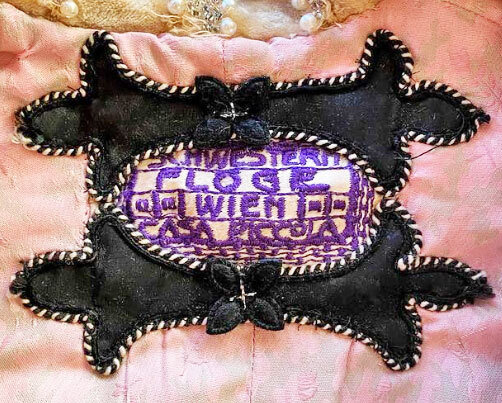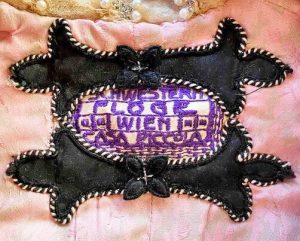Schwestern Flöge is a label most associated with Emilie Flöge. Born in 1874 in Vienna, Austria, her life and work is now mostly known because of her connection with Gustav Klimt, for whom she was a lifelong companion and muse, but she was also a successful fashion designer and businesswoman.
Flöge, along with her sisters, opened the couture house Schwestern Flöge (Flöge Sisters) in Vienna in 1904. The business thrived for 34 years, with the more progressive of Vienna’s women beating a path to the sisters’ establishment. Emilie had eclectic sensibilities, drawing on folk costume and textiles, along with Wiener Werkstätte projects and ideas. Reform dress with its loose, flowing cuts, was Emilie’s calling. In photos of her, you can see the physical freedom and expressive, bold style of her fashions.
Klimt’s iconic painting of Flöge when she was 28 shows a self-assured mien for certain. And there is no mistaking her hand in the costumes of some of Klimt’s sitters, such as Adele Bloch-Bauer (The Woman in Gold).
Written by denisebrain

